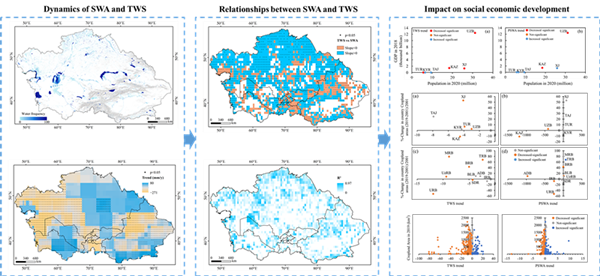Study Reveals Dynamics of Surface Water Bodies with 30-m Spatial Resolution in Central Asia
2021-05-14
Surface water resources and terrestrial water storage are important for human survival in Central Asia (CA) and the balance of regional ecosystems.
Although several remote sensing products have been used to map surface water, the spatial resolution (hundreds of meters) of some of them is not sufficient to identify small surface water bodies, with monitoring data only being available for a few years or less.
Researchers from the Xinjiang Institute of Ecology and Geography (XIEG) of the Chinese Academy of Sciences used all available Landsat images based on the Google Earth Engine platform and the adjacent-years interpolation method to describe the dynamics of surface water in CA with a 30-m spatial resolution during 1990-2019.
The study was published in Science of the Total Environment on April 18.
"In recent decades, under the joint effects of climate change and human activities, the surface water and terrestrial water storage of CA have undergone significant changes," said HUANG Wenjing, a Ph.D. student from XIEG and the first author of the study.
Results showed that the area of permanent surface water bodies in CA shrunk by 28,980 km2 during 1990-2019, where Uzbekistan had the largest reduction rate of ~412 km2/a. In contrast, the sufficient surface water areas (SSWA) in CA increased by ~50,661 km2, where Kazakhstan had the largest growth rate (~4666 km2/a).
The study also revealed the relationship between terrestrial water storage and permanent surface water area in CA from 2002 to 2016, and the restriction of their dynamics on social and economic development.
"Our findings show that the water crisis in CA has intensified and the prospects for regional water resources development are not optimistic," said HUANG.
The research provides high-precision surface water dynamics data that could help mitigating water crisis in CA and provide a current scientific reference for achieving the United Nations' Sustainable Development Goals.

Fig. Analysis framework of the relationship between water resources and social and economic development in Central Asia
Contact: LIU Jie, Xinjiang Institute of Ecology and Geography
E-mail: liujie@ms.xjb.ac.cn



